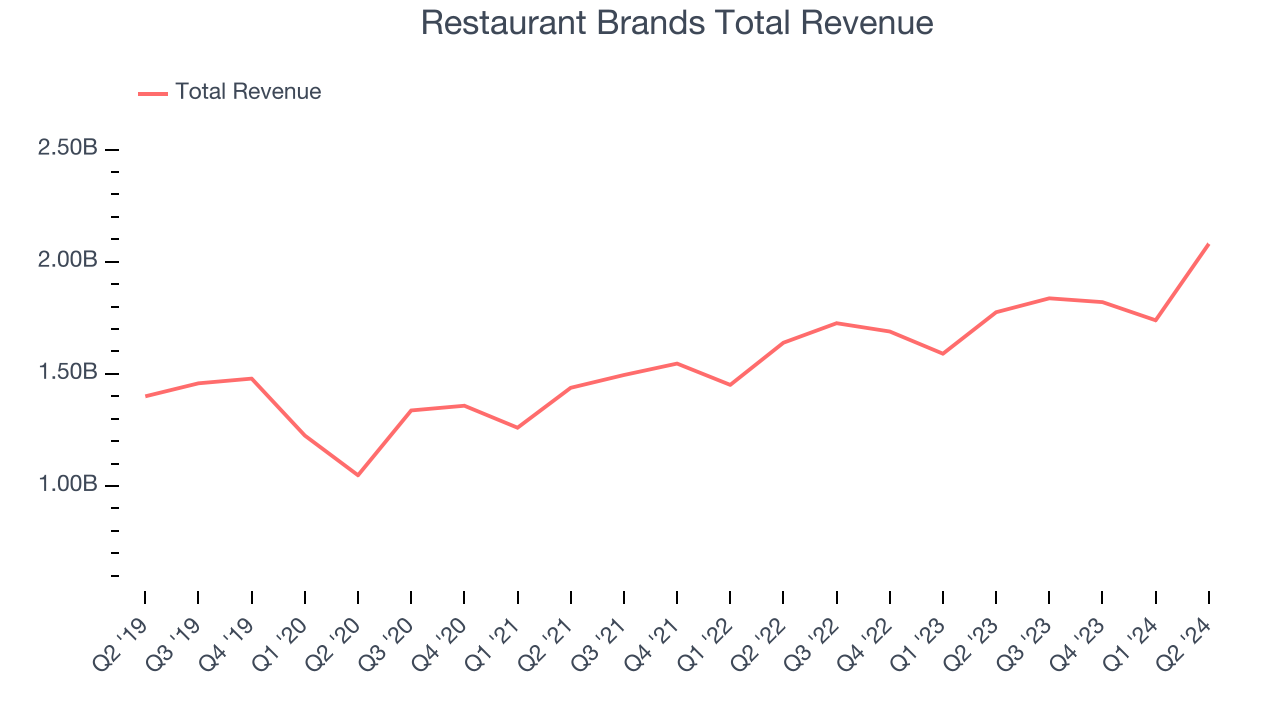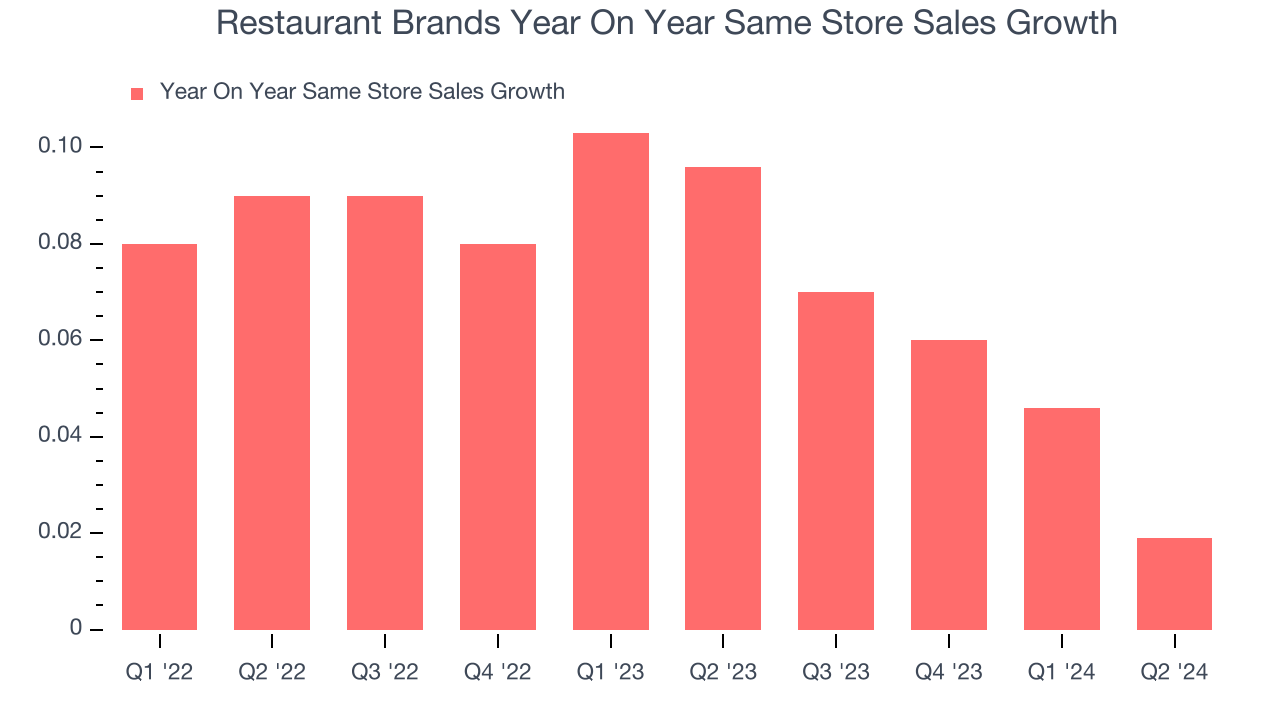Fast-food company Restaurant Brands International (NYSE:QSR) missed analysts' expectations in Q2 CY2024, with revenue up 17.2% year on year to $2.08 billion. It made a non-GAAP profit of $0.86 per share, improving from its profit of $0.85 per share in the same quarter last year.
Is now the time to buy Restaurant Brands? Find out by accessing our full research report, it's free.
Restaurant Brands (QSR) Q2 CY2024 Highlights:
- Revenue: $2.08 billion vs analyst estimates of $2.11 billion (1.2% miss)
- Adj. Operating Income: $632 million vs analyst estimates of $614 million (2.9% beat)
- EPS (non-GAAP): $0.86 vs analyst expectations of $0.86 (in line)
- Gross Margin (GAAP): 37.8%, down from 40.6% in the same quarter last year
- EBITDA Margin: 34.7%, down from 37.5% in the same quarter last year
- Free Cash Flow of $291 million, up 139% from the previous quarter
- Locations: 31,324 at quarter end, up from 30,125 in the same quarter last year
- Same-Store Sales rose 1.9% year on year (9.6% in the same quarter last year)
- Market Capitalization: $22.31 billion
Formed through a strategic merger, Restaurant Brands International (NYSE:QSR) is a multinational corporation that owns three iconic fast-food chains: Burger King, Tim Hortons, and Popeyes.
Traditional Fast Food
Traditional fast-food restaurants are renowned for their speed and convenience, boasting menus filled with familiar and budget-friendly items. Their reputations for on-the-go consumption make them favored destinations for individuals and families needing a quick meal. This class of restaurants, however, is fighting the perception that their meals are unhealthy and made with inferior ingredients, a battle that's especially relevant today given the consumers increasing focus on health and wellness.
Sales Growth
Restaurant Brands is one of the most widely recognized restaurant chains in the world and benefits from brand equity, giving it customer loyalty and more influence over purchasing decisions.
As you can see below, the company's annualized revenue growth rate of 6.6% over the last five years was mediocre, but to its credit, it opened new restaurants and grew sales at existing, established dining locations.

This quarter, Restaurant Brands's revenue grew 17.2% year on year to $2.08 billion, falling short of Wall Street's estimates. Looking ahead, Wall Street expects sales to grow 24.8% over the next 12 months, an acceleration from this quarter.
When a company has more cash than it knows what to do with, buying back its own shares can make a lot of sense–as long as the price is right. Luckily, we’ve found one, a low-priced stock that is gushing free cash flow AND buying back shares. Click here to claim your Special Free Report on a fallen angel growth story that is already recovering from a setback.
Same-Store Sales
Restaurant Brands's demand within its existing restaurants has generally risen over the last two years but lagged behind the broader sector. On average, the company's same-store sales have grown by 7.1% year on year. With positive same-store sales growth amid an increasing number of restaurants, Restaurant Brands is reaching more diners and growing sales.

In the latest quarter, Restaurant Brands's same-store sales rose 1.9% year on year. By the company's standards, this growth was a meaningful deceleration from the 9.6% year-on-year increase it posted 12 months ago. We'll be watching Restaurant Brands closely to see if it can reaccelerate growth.
Key Takeaways from Restaurant Brands's Q2 Results
We were impressed by how significantly Restaurant Brands blew past analysts' operating profit expectations this quarter. On the other hand, its revenue unfortunately missed analysts' expectations. Overall, this quarter was mixed. The market seemed to focus on the negatives, and the stock traded down 2.6% to $68.75 immediately following the results.
So should you invest in Restaurant Brands right now? When making that decision, it's important to consider its valuation, business qualities, as well as what has happened in the latest quarter. We cover that in our actionable full research report which you can read here, it's free.
